When organizations commit to AI, they often face the same problem: where do we start?
The executive team is aligned on the vision. They want to transform operations, elevate customer experiences, and build scalable systems with AI. But when it comes to execution, things get muddy. One team is testing a chatbot here, another is prototyping an agent there. No shared direction. No centralized ownership. No strategy.
What results is a collection of isolated pilots—proof-of-concepts that never scale, departments solving the same problems with different tools, and a tech stack that becomes harder to manage with every quarter.
To make AI Agents truly work, the company doesn’t just need activity. It needs clarity.
So where should adoption begin?
AI Pilots Are Everywhere. Strategy Is Nowhere.
In most organizations, the AI story is fragmented. Product teams are experimenting with conversational experiences. IT is evaluating platforms. Marketing is curious about generative content. And customer service? They’re swamped, under-resourced, and quietly trying to automate what they can—without breaking anything.
The truth is, this chaos isn’t surprising. We’re early in the adoption curve. And while enthusiasm is high, structure is lacking.
That’s exactly why leadership must decide where the AI Agent journey begins. Without a clear starting point, AI adoption risks becoming just another buzzword that never translates into real value.
Why Customer Service Should Lead the Charge
The most effective place to start? Customer service.
It’s the only department where natural, human-like conversation is already expected. Customers are used to chatting, emailing, and calling. And those interactions? They reveal everything—every gap, every frustration, every broken process across the company.
Support teams hold a goldmine of insight. They don’t just know what customers ask. They understand why. They know which issues keep recurring, what frustrates users most, and where internal tools fall short. They’re already documenting this every day.
More importantly, customer service doesn’t need to wait for a reorg, a new product roadmap, or a strategic offsite. The problems are clear. The data is there. The use cases are obvious.
If you're serious about AI, start where the friction lives.
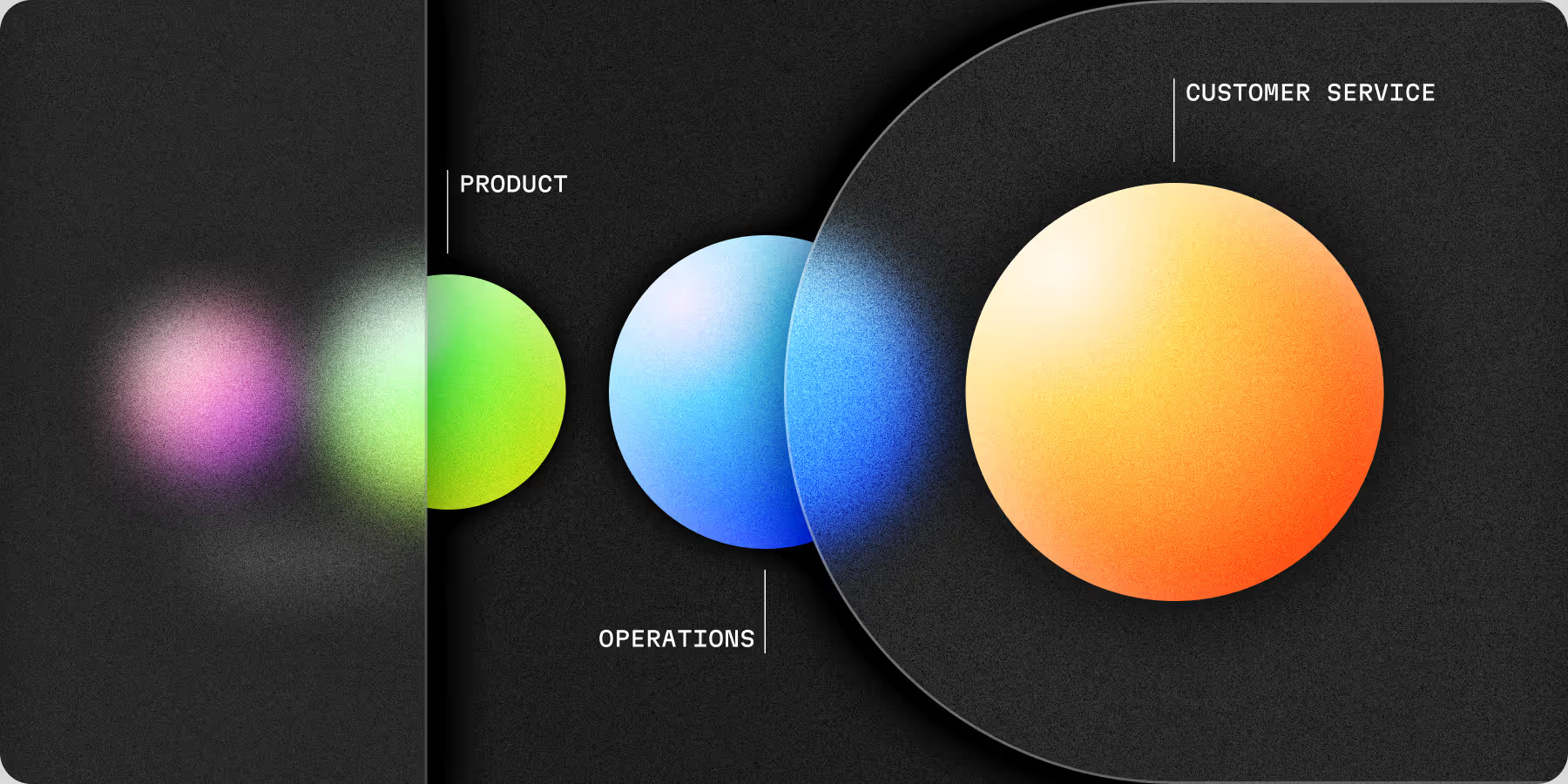
Set the Right Expectations
Customer service is the right place to begin—but it can’t be treated as a dumping ground for automation experiments. This is a strategic transformation, and like any transformation, it requires clarity of roles and expectations.
On the service side, leaders should expect real operational insight: a detailed breakdown of contact drivers across all channels, a clear-eyed view into which inquiries occur most frequently, and a shortlist of use cases that are not just repetitive but ready for automation.
On the executive side, support teams must be given more than a mandate. They need ownership. The autonomy to lead implementation. The tools to build and manage AI Agents without waiting in engineering backlogs. And above all, they need acknowledgment that this isn’t a cost-saving exercise—it’s a shift in how the company interacts with its customers.
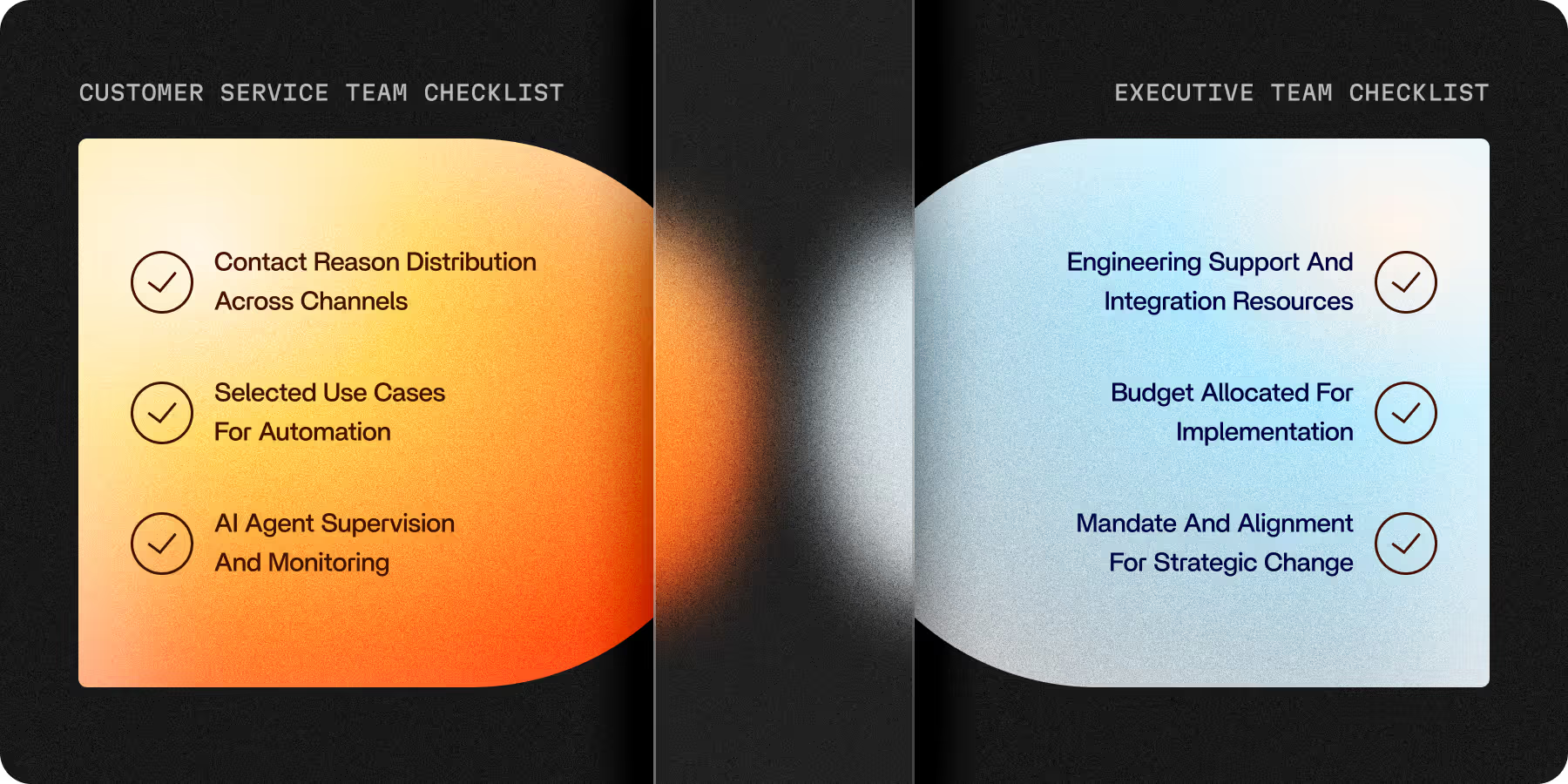
Don’t Leave Support Teams Alone
While customer service is the most natural starting point for AI Agent adoption, it cannot carry the transformation on its own.
End-to-end automation—the kind that truly changes the way an organization operates—requires much more than well-documented FAQs or scripted responses. It demands real-time access to systems, data, and actions. In other words, it requires infrastructure. And infrastructure is the domain of the technical teams.
This is where engineering plays a pivotal role. Their task is not simply to support or unblock, but to enable. AI Agents must be able to pull order data, update customer records, initiate refunds, cancel shipments, or escalate critical issues. These aren’t cosmetic improvements—they’re the difference between a helpful conversation and a resolved problem.
If customer service owns the “why” and the “what,” engineering owns the “how.” And when both are aligned, customers experience something they’ve rarely encountered before: a brand that doesn’t just listen, but acts—instantly, intelligently, and consistently.
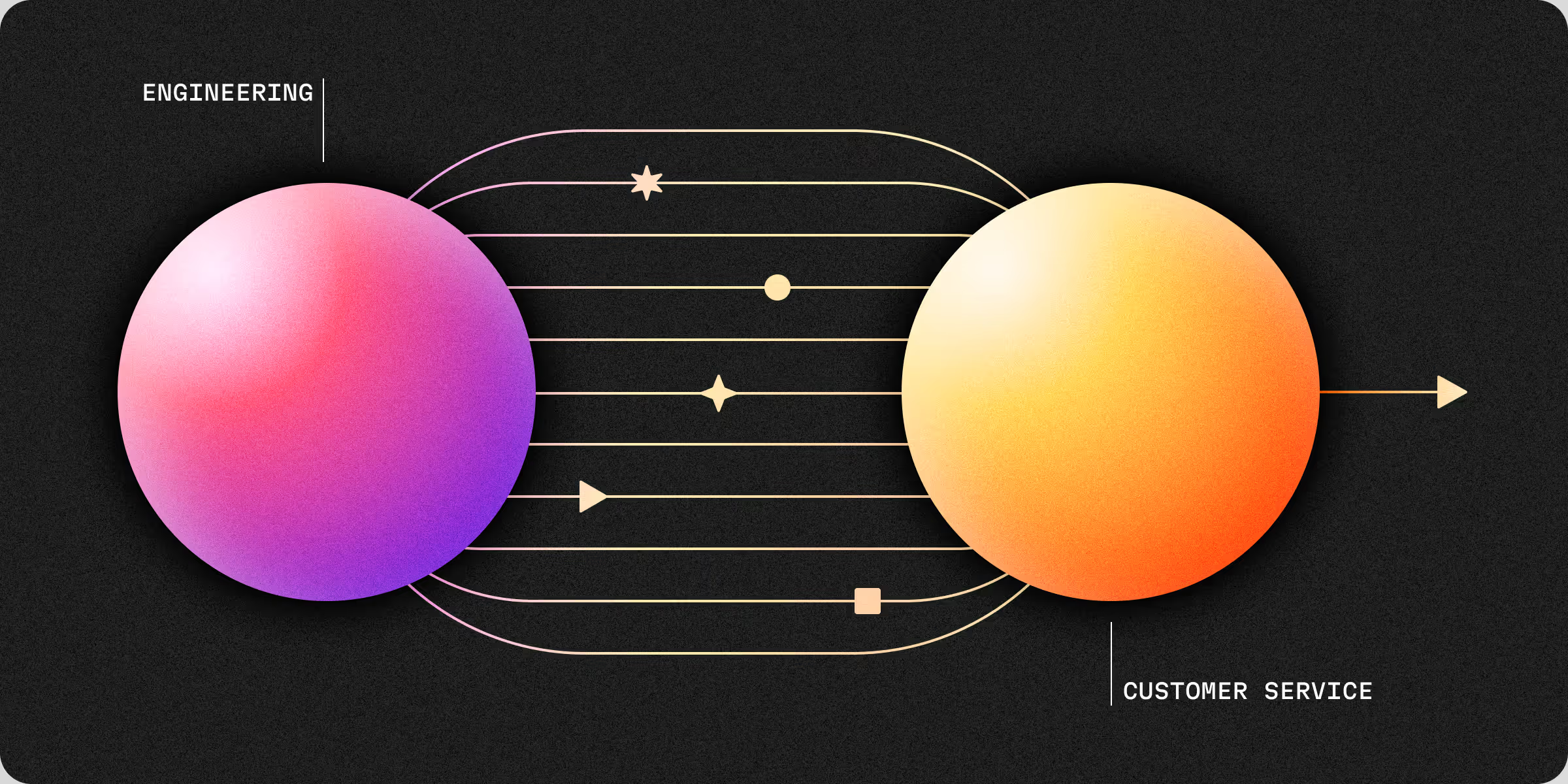
How AI Agents Scale Across the Business
Once alignment is achieved between customer service and engineering, the impact of AI begins to materialize in measurable ways. Automation no longer feels theoretical—it becomes operational. Resolution times shrink, customer satisfaction rises, and internal resistance softens as teams see real outcomes.
It is at this point that momentum shifts. Other departments, having observed early success, begin to raise their hands. Product managers consider how AI Agents might manage subscription updates or feedback loops. Logistics teams explore ways to automate repetitive shipping inquiries. Even marketing begins to envision conversational campaigns that don’t just inform—but interact.
This is the moment when AI can begin to scale. Not as a collection of disconnected experiments, but as a coordinated organizational capability. Each team builds for its domain, but they build on a shared foundation—one platform, one orchestration layer, one standard for quality and experience. That’s how you move from isolated automation to enterprise-wide transformation.
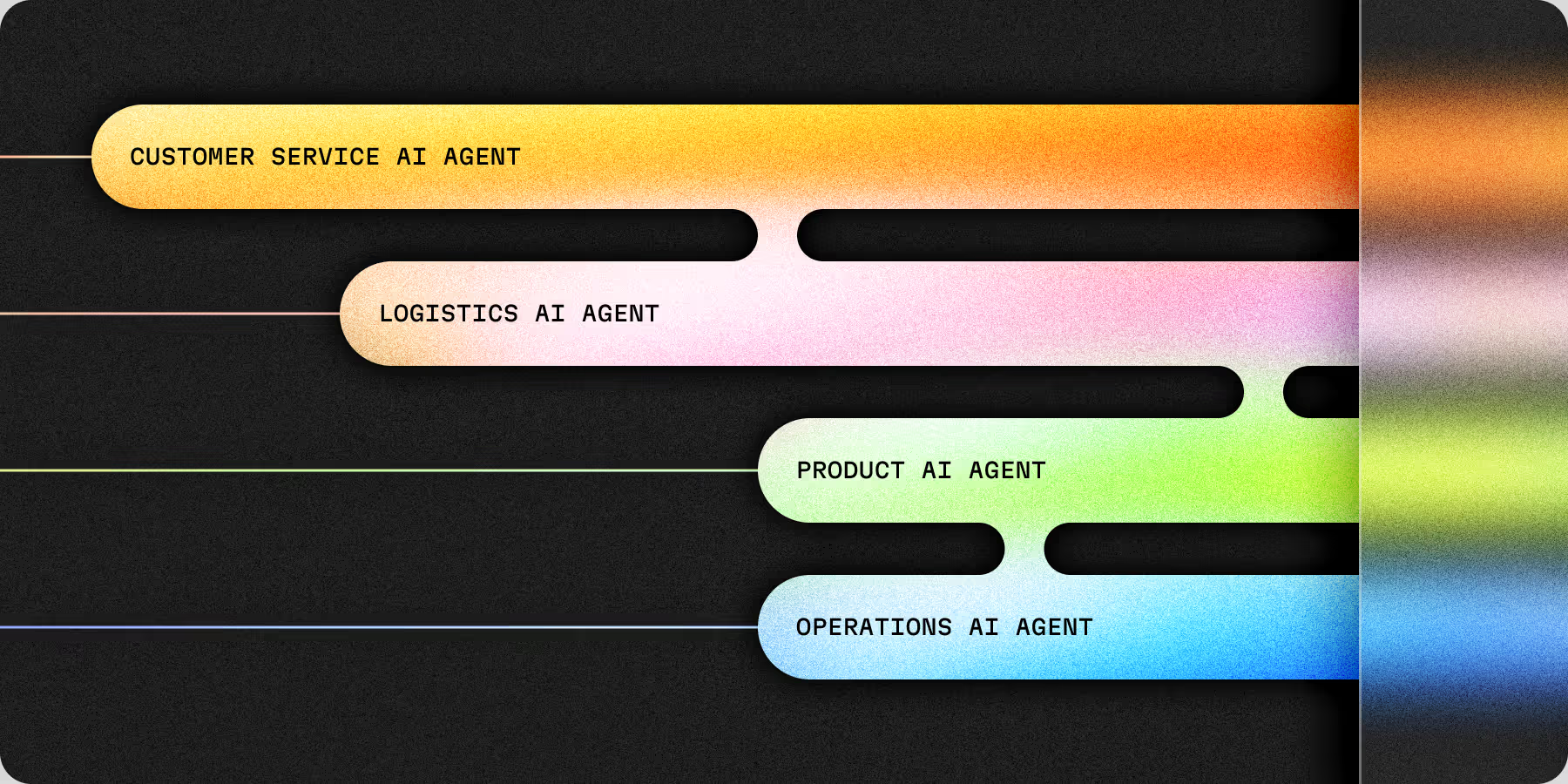
Why the CTO Must Own the Platform
As AI Agent adoption expands across departments, the challenge evolves from experimentation to coordination. What was once a contained initiative inside customer service becomes a network of interconnected agents serving different domains, channels, and functions. At this stage, orchestration isn’t just helpful—it becomes mission-critical.
The question shifts from "what can we automate?" to "who ensures these agents work together?" Enterprises cannot afford the risk of siloed AI deployments—one agent trained on outdated data, another contradicting product policy, a third introducing compliance risk. Without a clear owner, the experience becomes inconsistent, the infrastructure bloated, and the strategic value diluted.
This is precisely why the Chief Technology Officer must step in—not to micromanage agent development, but to own the platform strategy. A unified Customer AI Agent Platform becomes essential: a foundation that enables departments to build agents, deploy them across all channels, and orchestrate every interaction with precision. It acts as both infrastructure and oversight—offering security, scalability, and strategic alignment across the entire enterprise.
The result is not just control. It’s clarity. No more duplicate vendors. No more overlapping logic. No more guessing which AI is in charge. Just a single, cohesive system built for scale—one that turns the chaos of early experimentation into a durable, future-ready architecture.
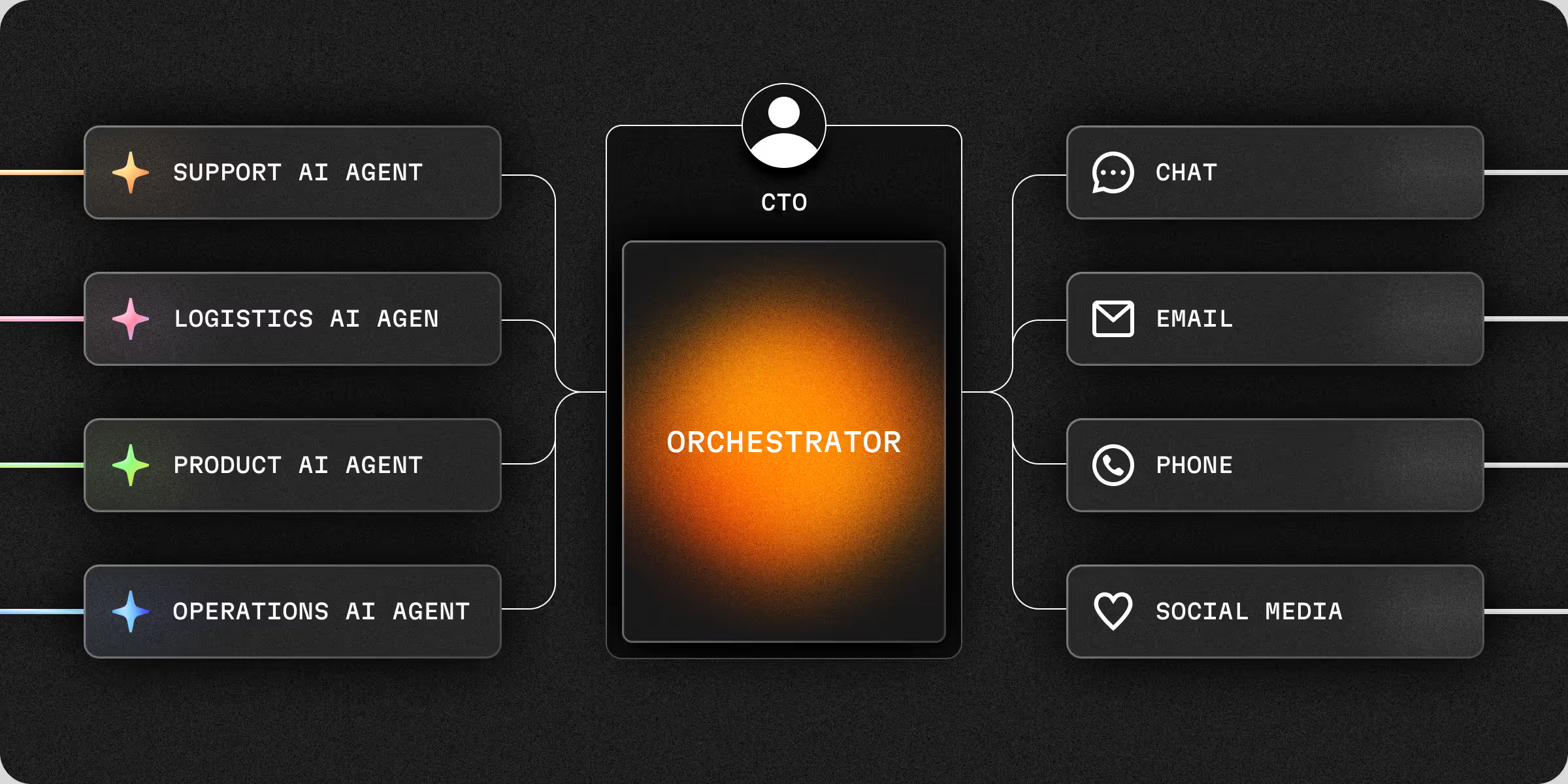
What is the future of Customer Service?
As AI Agent adoption becomes embedded across the organization, the role of customer service will evolve dramatically. No longer the sole department responsible for resolving every customer issue, support will begin to decentralize—its knowledge, tools, and practices merging into every product and operational team.
Each team will own the end-to-end experience related to their domain, empowered by AI Agents to handle inquiries, execute workflows, and offer proactive support. This shift not only distributes responsibility but ensures more accurate, faster, and context-aware resolutions, delivered by the teams closest to the service itself.
The future is not one team handling every problem, but every team being accountable for the experience they create.
From Customer Service to a Fully Conversational Business
The journey begins in customer service—a natural starting point for conversational AI. As automation proves successful and the technical foundation solidifies, the model expands. AI Agents are gradually adopted by other departments, evolving from a single initiative into a company-wide capability. They become part of every team’s workflow, transforming how services are delivered. AI is no longer a tool owned by one team; it becomes native to how the entire organization operates.
And here’s where the real shift begins. As more business processes are handled seamlessly by AI Agents, the interface paradigm begins to change. Forms, drop-down menus, and multi-step workflows start to fade into the background. Instead of learning how a system works, customers simply say what they need—whether they’re on chat, voice, or any digital channel.
This is the promise of fully conversational experiences: services that adapt to people, not the other way around. It’s not just better UX. It’s the beginning of a new operating model—one where conversation becomes the primary interface between brands and their customers.
.avif)

.avif)
.svg)
.avif)






